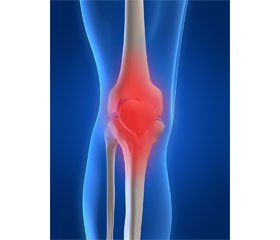Журнал «Боль. Суставы. Позвоночник» 1 (21) 2016
Вернуться к номеру
Peculiarities of course osteoarthritis of the knee joints depending on the degree of comorbidity and damage of hepatobiliary system
Авторы: Voloshyna L., Romanchuk V. - Bukovinian State Medical University, Chernivtsi, Ukraine
Рубрики: Ревматология, Травматология и ортопедия
Разделы: Медицинские форумы
Версия для печати
The article was published on p. 85
Background. Osteoarthritis (OA) is age-depended disease and more common in people over the age of 40. Important perceived influence on the course of osteoarthritis of diseases that share common pathogenic mechanisms and have co-burden effect (comorbidity).
The high frequency of the combination of OA with lesions of the hepatobiliary system has a common pathogenetic mechanism based on chronic low-level inflammation, metabolic disorders and enhances the risk of mortality from age cardiovascular pathology. The above creates difficulty in implementing a complex treatment of OA and requires a differentiated approach to it.
Aim was to study the peculiarities of OA depending on the degree of comorbidity and damage of the hepatobiliary system and levels of cardiovascular risk (CVR).
Materials and methods. The study involved 112 patients with OA, including 97 (86.6 %) women and 15 (13.4 %) men aged 43 to 77 years (58.10 ± 6.82) in exacerbation period. The diagnosis of OA established according to the diagnostic criteria by EULAR, comorbidity index by Charlson (1988).
Results. According comorbidity index, depending on the age group of patients and stage of OA revealed that I stage of OA was observed mainly in middle-aged patients (32.14 %) who had less comorbidity index (3.30 ± 0.12), and the second stage of OA detected in elderly and senile patients (67.86 %) with a comorbidity index fluctuations within 5–8 points (6.80 ± 0.16).
By clinical and instrumental verification hepatobiliary lesions in the patients revealed that in addition to patterns of growth with age, there was a tendency increases their degree of severity, progression of stage OA, comorbidity index and the degree of CVR. Thus, in patients with OA established frequency of acalculous cholecystitis in middle age 35 (31.3 %), elderly and senile patients — 60 (53.6 %), gallstone disease correspondently 6 (5.4 %) and 11 (9.8 %) and chronic steatohepatitis this background 18 (16.1 %).
The duration of treatment for patients in hospital increased with increasing of comorbidity index, degree of CVR and stage OA for 2–4 days. Due to the already mentioned inpatient treatment phase of complex prevention of cardiovascular events was carried out considering comorbidity index, pathogenetic features of comorbidity states, including damage of liver.
Conclusion. With increasing age of patients with OA increases the number and severity of comorbidity diseases (comorbidity index), the stage of the disease, including damage of the hepatobiliary system and the degree of CVR. In order to improve the results of treatment and prevention of cardiovascular events advisable to use complex application of methods, that affect the common pathogenetic links their formation and progression.

